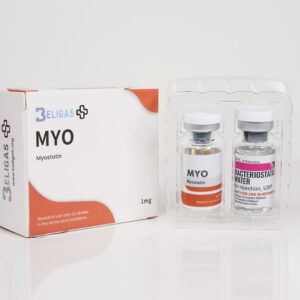


Myostatin plays a critical role in muscle regulation, acting as a suppressor of muscle growth by binding to ActRIIB receptors and activating SMAD pathways. This process reduces muscle cell proliferation and promotes degradation, particularly through interactions with the Akt/mTOR and FoxO1 pathways. Its levels are influenced by various factors, including TNF-α, IGF-1, and exercise, while being self-regulated via feedback loops. As a potential biomarker for sarcopenia and cachexia, myostatin faces challenges in assay specificity and clinical application, necessitating further research to validate its diagnostic and therapeutic relevance.
Baczek, J., Silkiewicz, M., & Wojszel, Z.B., 2020. Myostatin as a Biomarker of Muscle Wasting and Other Pathologies—State of the Art and Knowledge Gaps. Nutrients.
Disclaimer: Information provided it this page is for general information only and does not substitute for professional medical advice.
For detailed information about MYO by Beligas Pharmaceuticals, consult with your doctor or healthcare professional.


Baczek, J., Silkiewicz, M., & Wojszel, Z.B., 2020. Myostatin as a Biomarker of Muscle Wasting and Other Pathologies—State of the Art and Knowledge Gaps. Nutrients.

Baczek, J., Silkiewicz, M., & Wojszel, Z.B., 2020. Myostatin as a Biomarker of Muscle Wasting and Other Pathologies—State of the Art and Knowledge Gaps. Nutrients.

Baczek, J., Silkiewicz, M., & Wojszel, Z.B., 2020. Myostatin as a Biomarker of Muscle Wasting and Other Pathologies—State of the Art and Knowledge Gaps. Nutrients.